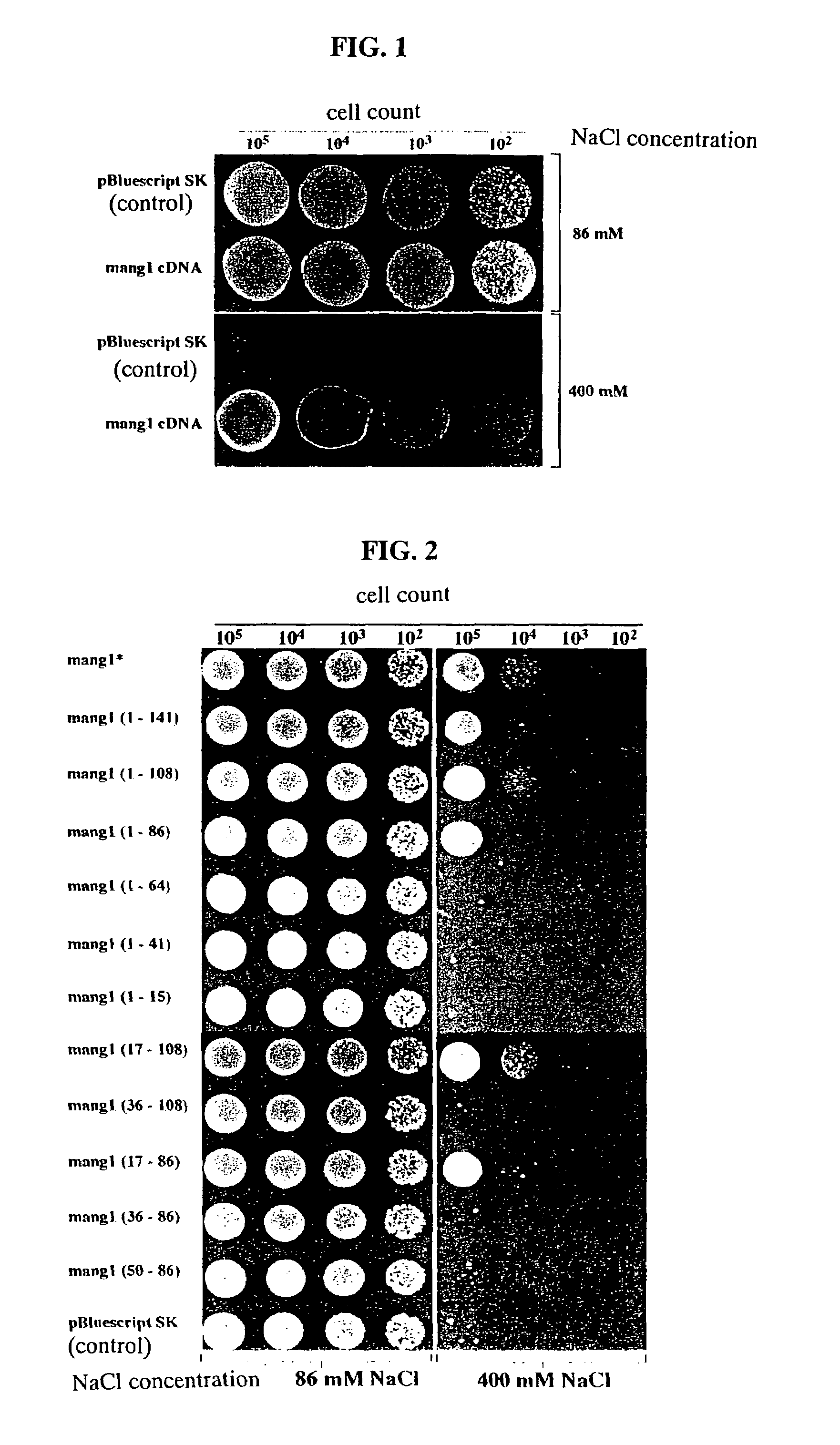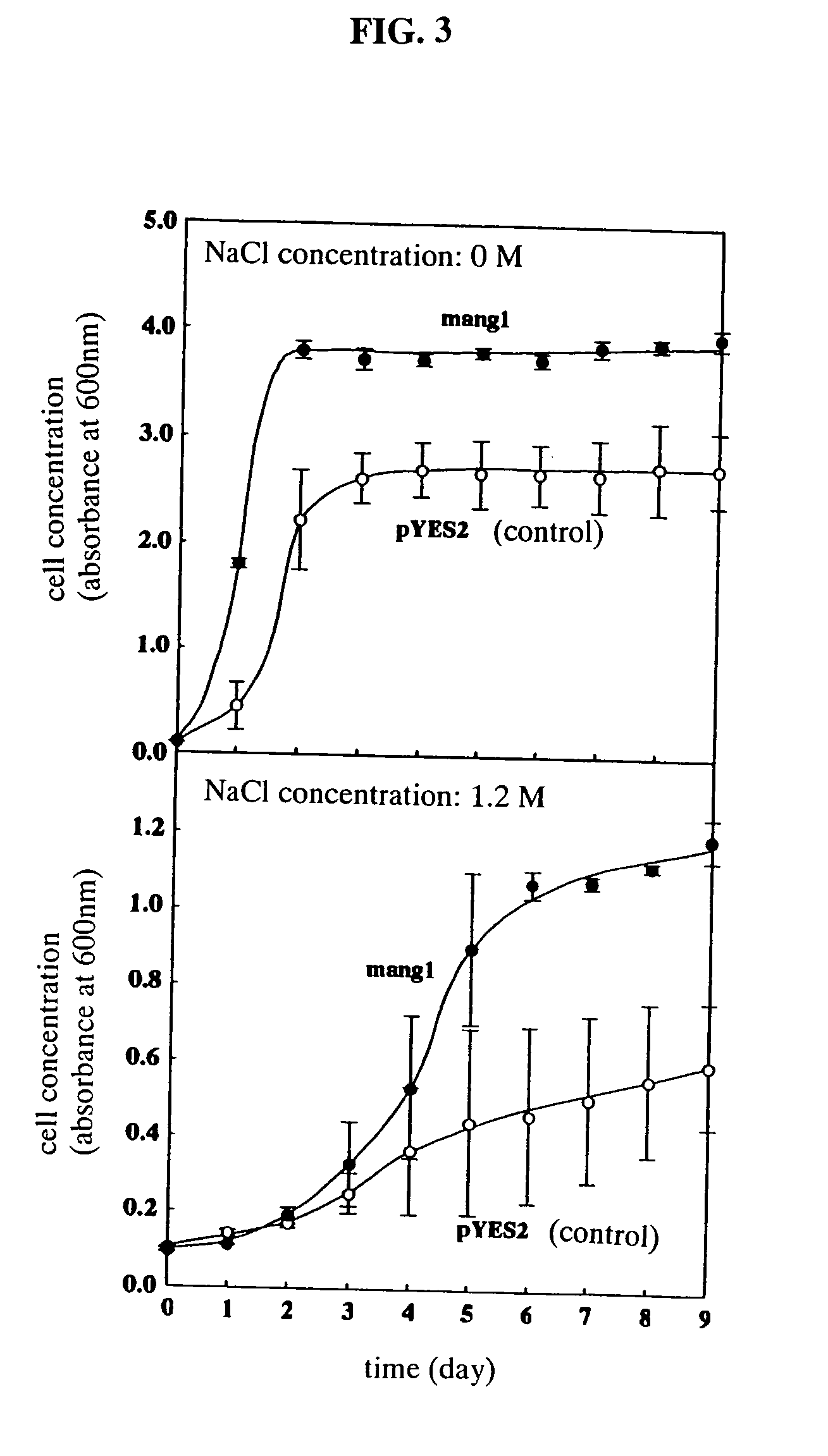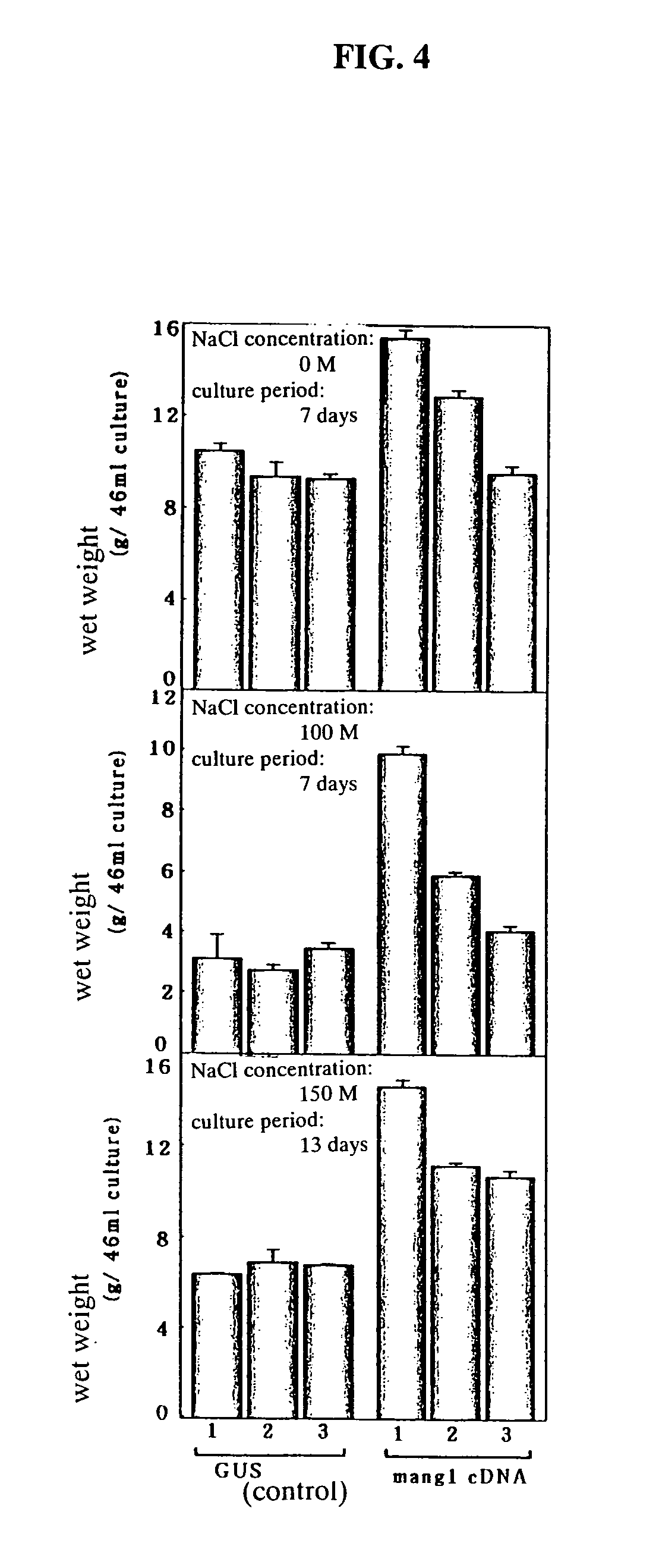Environmental stress resistance gene
- Summary
- Abstract
- Description
- Claims
- Application Information
AI Technical Summary
Benefits of technology
Problems solved by technology
Method used
Image
Examples
example 1
Preparation of cDNA Library of Mangrove and Other Halophytes Plants
[0058]Suspension culture cell lines of Bruguiera sexangula established by Miura was used as mangrove suspension culture cells (J. Plant Res. 110, 25–29, 1997). The cells are cultured in AA medium containing 100 mM of NaCl, separated 120 ml for each flask of 500 ml, and performed shaken culture (70 rpm) in a dark room at 26° C. Following the procedure shown below, the cDNA library of mangrove was carried out by using suspension culture cells. First, following the method by Ostrem et al. (Plant Physiol. 84, 1270–1275, 1987), total RNA were extracted, and then poly(A)+RNA was purified by using Oligotex-dT30(Daiichi Kagaku sha). The purified poly(A)+RNA was used to synthesize cDNA, and cDNA library was constructed by introducing the lambda phage vector λ ZapII (Stratagene). Methods for constructing cDNA library by introducing λ ZapII are well known, and the actual procedure was followed by the manufacturer's manual by St...
example 2
Determination of the Conditions of Screening cDNA Relevant to Salt Tolerance
[0059]The present inventors used the gene expression system of coliforms as a method for screening cDNA relevant to salt tolerance from cDNA library, of mangrove or other halophytes. In other words, the present inventors developed a novel method for acquiring cDNA relevant to salt tolerance by introducing cDNA of mangrove or other halophytes into coliforms and selecting transformed coliforms with their salt tolerance improved. 2YT agar medium containing appropriate concentration of NaCl were used to select transformed coliforms with their salt tolerance improved. Before starting the screening, the present inventors determined the minimal concentration of NaCl inhibiting growth of various coliforms (DH5α, JM109, HB101, SOLR) in order to select the host coliforms appropriate for the screening. Such coliforms are well-known strains, and they are commercialized by TOYOBO and Stratagene, and others. Although the ...
example 3
cDNA Screening Relevant to Salt Tolerance From cDNA Library of Mangrove and Other Halophytes
[0060]cDNA library of mangrove and other halophytes was introduced into SOLR by inserting pBluescript SK carrying the library with in vivo excision system (Stratagene). The introduction of genes was performed by manufacturer's manual for ZAP-cDNA / Gigapack Cloning Kit (Stratagene). In order to select SOLR introduced with cDNA relevant to salt tolerance from SOLR introduced with cDNA of mangrove and other halophytes, two steps of screening were performed. In the first screening, SOLR introduced with cDNA of mangrove and other halophytes was planted on 2YT agar medium containing 400 mM of NaCl, 50 μg / ml of kanamycin, 50 μg / ml of ampicilline, and 0.05 mM of IPTG, and cultured at 37° C. for 20 hours. All colonies obtained under the conditions are inoculated on said agar medium again, and their growth was observed. As a result of this process, 168 clones with salt tolerance improved were obtained o...
PUM
| Property | Measurement | Unit |
|---|---|---|
| Temperature | aaaaa | aaaaa |
| Fraction | aaaaa | aaaaa |
| Stress optical coefficient | aaaaa | aaaaa |
Abstract
Description
Claims
Application Information
 Login to View More
Login to View More - Generate Ideas
- Intellectual Property
- Life Sciences
- Materials
- Tech Scout
- Unparalleled Data Quality
- Higher Quality Content
- 60% Fewer Hallucinations
Browse by: Latest US Patents, China's latest patents, Technical Efficacy Thesaurus, Application Domain, Technology Topic, Popular Technical Reports.
© 2025 PatSnap. All rights reserved.Legal|Privacy policy|Modern Slavery Act Transparency Statement|Sitemap|About US| Contact US: help@patsnap.com



